Creating an at-home spa treatment for your face can be a rejuvenating experience. With simple steps, you can enjoy a luxurious facial without ever leaving your home. This not only fosters relaxation but also enhances your skin’s health and appearance.
Start by preparing your space to mimic a serene spa environment. Use soft lighting, calming scents, and soothing music. Once you set the mood, focus on your skin’s needs with exfoliation and steam, allowing for deep cleansing and hydration. Incorporate nourishing masks and gentle massage techniques for an indulgent self-care session.
Transform your regular routine into a delightful escape with these easy techniques that cater to your skin. You’ll find the process not only beneficial for your skin but also a perfect way to unwind and take care of yourself.
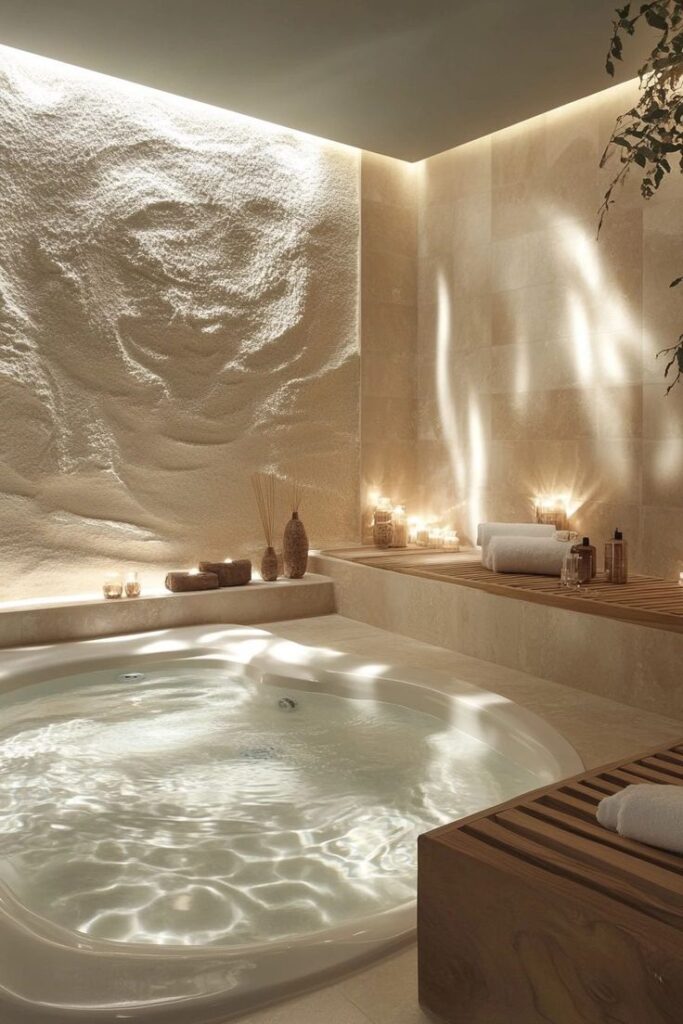

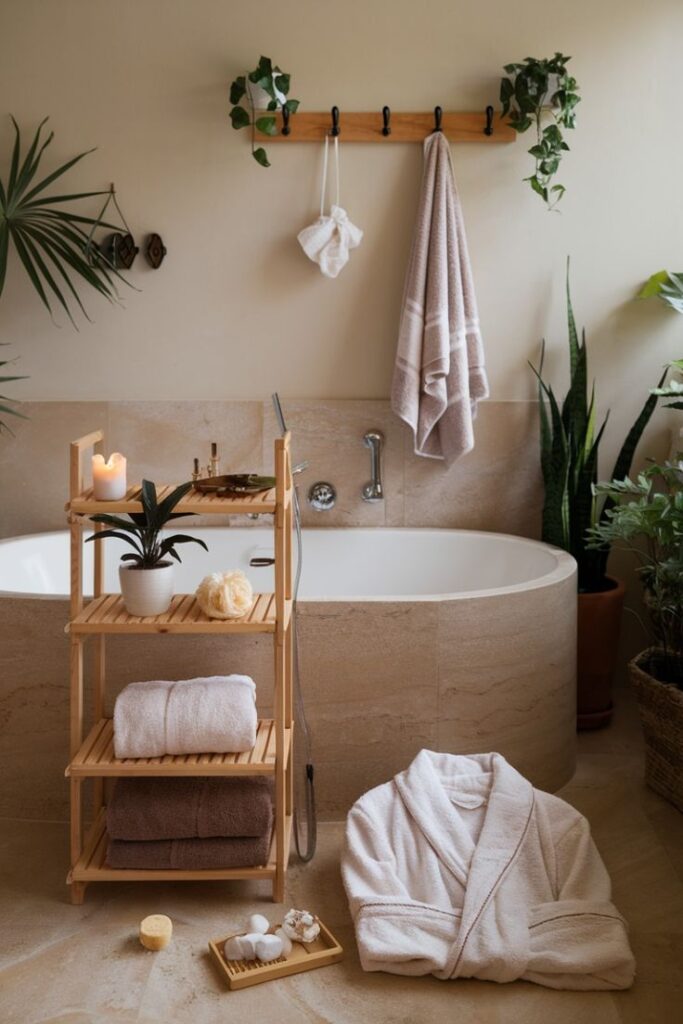
Key Takeaways
- Prepare a calming atmosphere to enhance relaxation.
- Use effective treatments to cleanse and nourish your skin.
- Finish with a gentle massage for added benefits and enjoyment.
Preparing Your Space and Skin
Creating the right atmosphere and properly preparing your skin is essential for an effective at-home spa experience. Focus on establishing a calming environment while understanding your skin’s specific needs to achieve optimal results.
Creating a Spa-Like Environment
To set up a spa-like environment, consider the following elements:
Lighting: Dim lighting enhances relaxation. Use soft, warm lights or candles to create a soothing ambiance.
Aromatherapy: Essential oils can transform your space. Lavender essential oil promotes calmness. Use a diffuser or add a few drops to a warm bath.
Sound: Play soft music or nature sounds to further enhance the relaxing atmosphere.
Comfort: Lay out soft towels or a cozy robe. Ensure your seating is comfortable.
By carefully selecting these elements, you create a retreat that encourages relaxation and mental tranquility.
Understanding Your Skin Type
Knowing your skin type is crucial for effective treatment. Here’s a brief overview:
Dry Skin: Lacks moisture. Look for rich creams and hydrating ingredients, such as hyaluronic acid.
Oily Skin: Characterized by excess sebum. Use lightweight, oil-free products and consider gel-based cleansers.
Sensitive Skin: Easily irritated. Opt for gentle, fragrance-free products to minimize adverse reactions.
By identifying your skin type, you can tailor your treatments to meet its specific needs, ensuring better nourishment and care.
Cleansing and Toning Basics
A proper cleansing routine is fundamental to any skincare regimen. Consider these steps:
Double Cleansing: Start with an oil-based cleanser to remove makeup and impurities. Follow up with a facial cleanser suited for your skin type.
Toning: After cleansing, apply a toner to balance your skin’s pH. Look for alcohol-free formulas that hydrate and prep your skin for subsequent treatments.
Hydration: Finish your routine with a lightweight moisturizer compatible with your skin. This keeps your skin hydrated without feeling heavy.
These steps create a clean canvas, allowing other treatments to penetrate better and provide effective results.
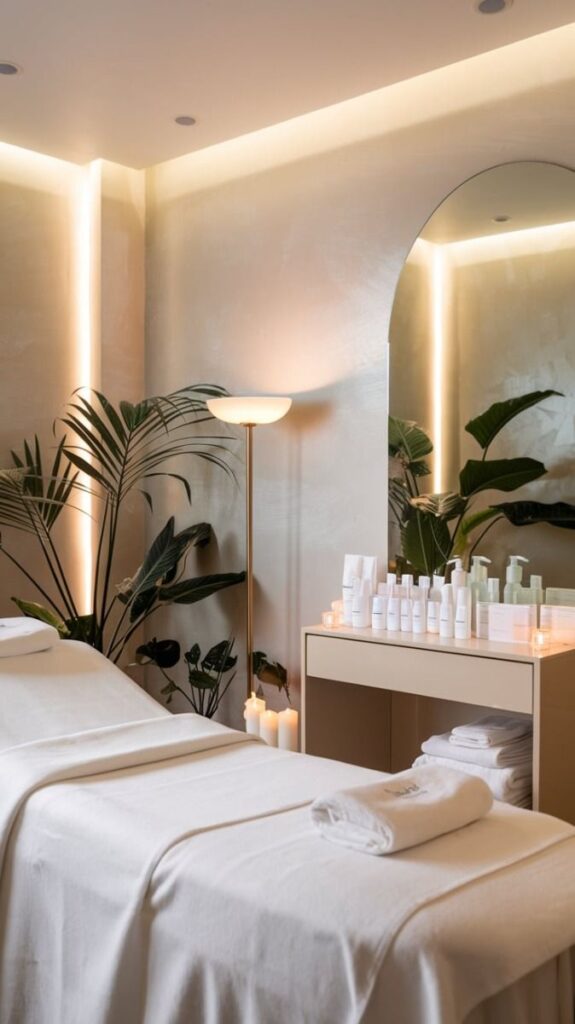
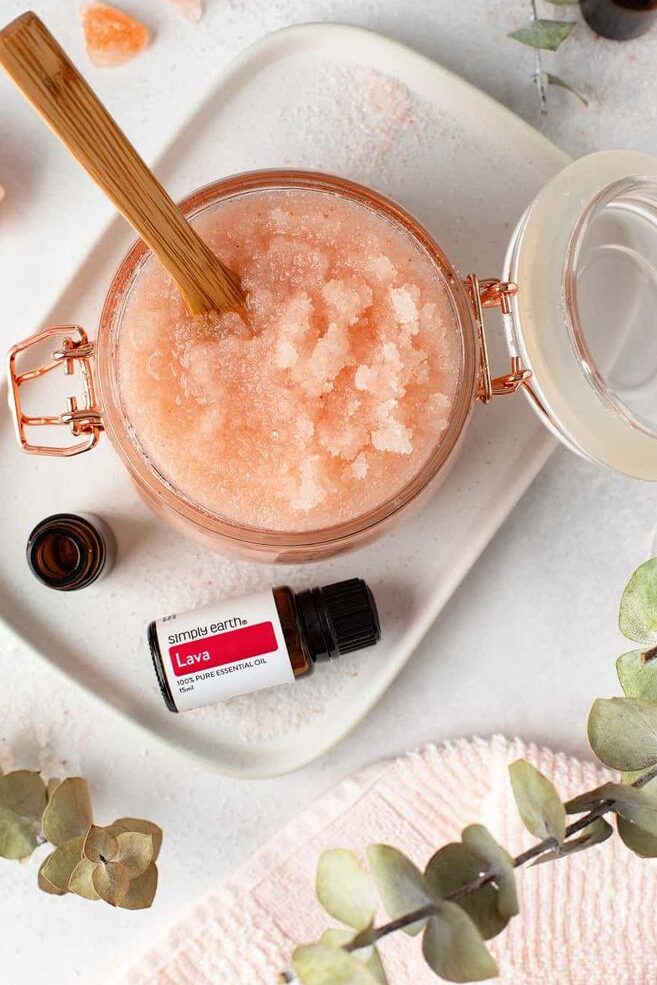
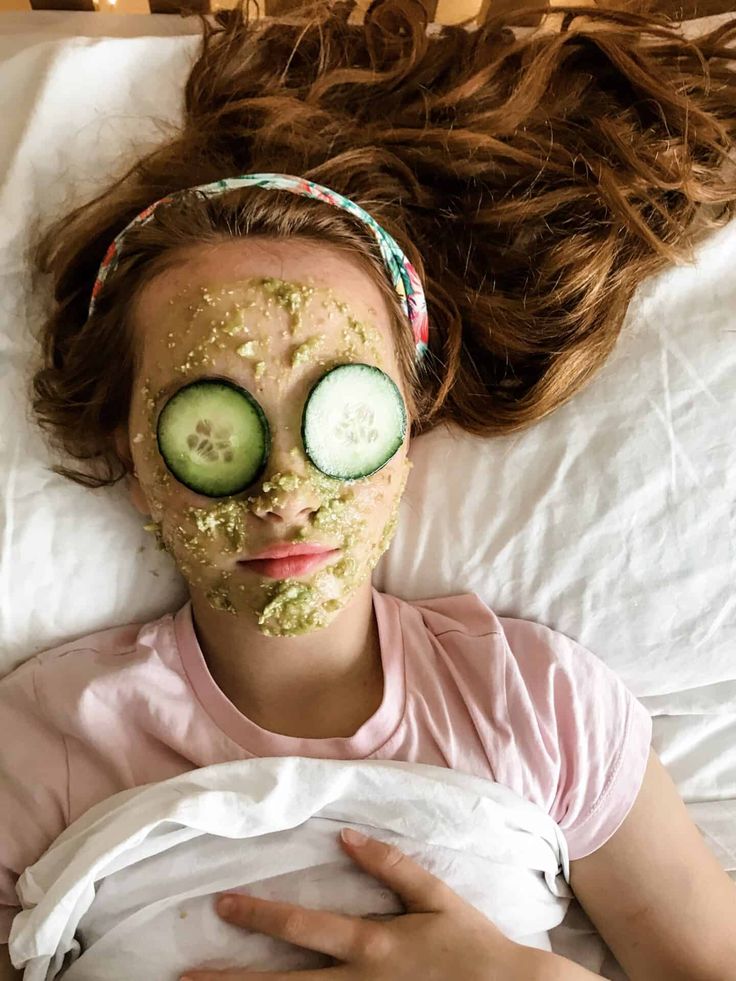
Exfoliation and Steam Treatment
Exfoliation and steam treatments are essential steps in an at-home spa routine. These methods help clear clogged pores and enhance your skin’s texture, allowing for better absorption of skincare products.
Choosing the Right Exfoliator
Selecting the correct exfoliator is crucial for effective results. You can choose between physical and chemical exfoliators.
- Physical exfoliators include facial scrubs that manually slough off dead skin. Look for options with gentle particles to avoid irritation.
- Chemical exfoliators contain acids like alpha-hydroxy acids (AHAs) or beta-hydroxy acids (BHAs). These penetrate deeper into the skin, promoting cell turnover and unclogging pores.
Consider your skin type before choosing an exfoliator. If you have sensitive skin, start with a milder product. For oily skin, stronger exfoliators may be more beneficial. Always patch-test new products to prevent adverse reactions.
How to Safely Steam Your Face
Steaming your face opens up pores and enhances the exfoliation process. Begin by cleaning your face to remove makeup and dirt.
Boil water and pour it into a bowl. Allow it to cool slightly before positioning your face above the steam. Maintain a distance of about 12 inches to avoid burns. Drape a towel over your head to trap steam, inhaling the warm moisture for about 5-10 minutes.
Optionally, you can add herbs or essential oils to the water for added benefits. After steaming, follow up with exfoliation. Finish with a moisturizer to hydrate your skin. Always listen to your skin’s needs and adjust the frequency of steaming based on how your skin responds.

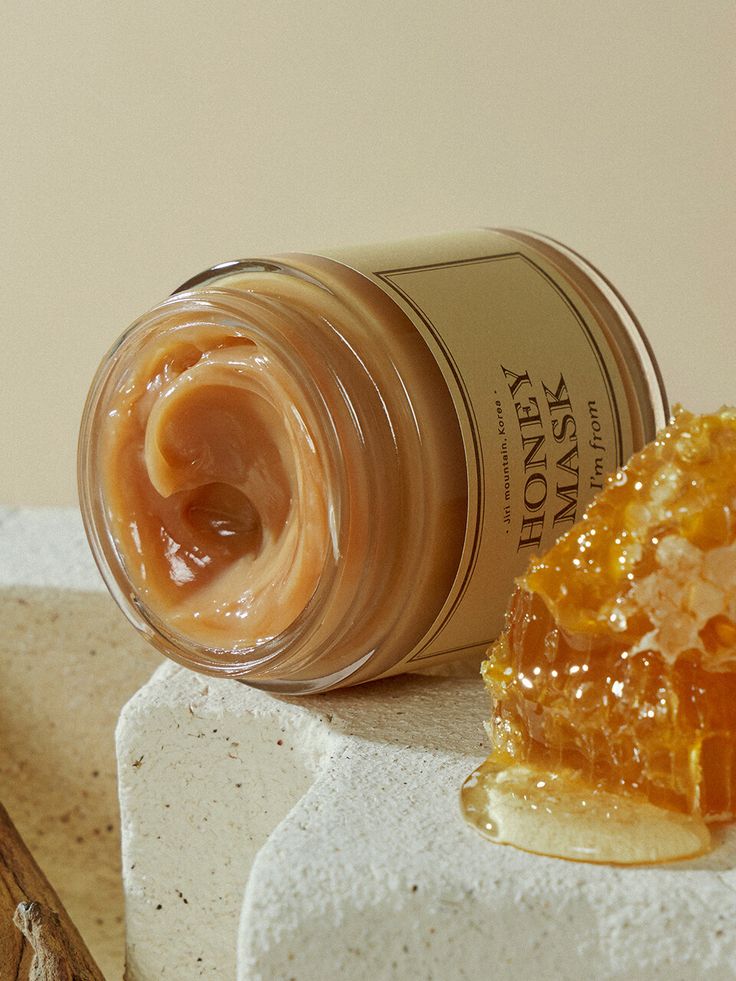
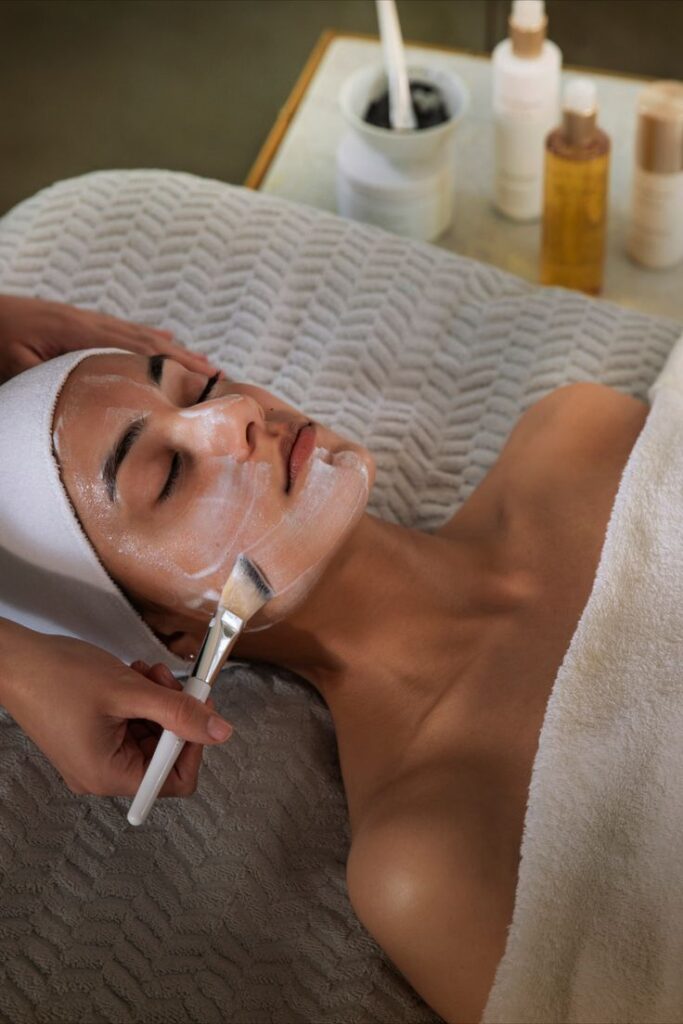
Hydration and Nourishment
Proper hydration and nourishment are essential for glowing skin. Utilizing serums and moisturizers can deliver vital nutrients while face masks provide an extra layer of moisture and care.
Applying Serums and Moisturizers
Incorporating serums and moisturizers into your skincare routine is crucial. Serums are lightweight products that penetrate deeper layers of the skin, delivering concentrated ingredients. Look for serums containing hyaluronic acid just like Amazon hyaluronic acid supplement or vitamin C for hydration and brightening effects.
Choose a moisturizer suited to your skin type. For example, a natural moisturizer with ingredients like aloe vera or shea butter can hydrate dry skin effectively. Apply your serum first, letting it absorb before layering on your moisturizer for maximum benefits. This process helps create a protective barrier that locks in moisture.
The Benefits of Face Masks
Face masks can significantly enhance your at-home spa experience. There are various types available, such as cream masks, sheet masks, and clay masks, each catering to specific skin needs. Cream masks tend to be more nourishing, making them ideal for dry or mature skin, while sheet masks provide instant hydration.
Using a facial mask once or twice a week can boost your skin’s moisture content and deliver essential nutrients. Look for masks with ingredients like honey, which is a natural moisturizer, or antioxidants that promote overall skin health. Regular application can result in a more youthful, radiant complexion.
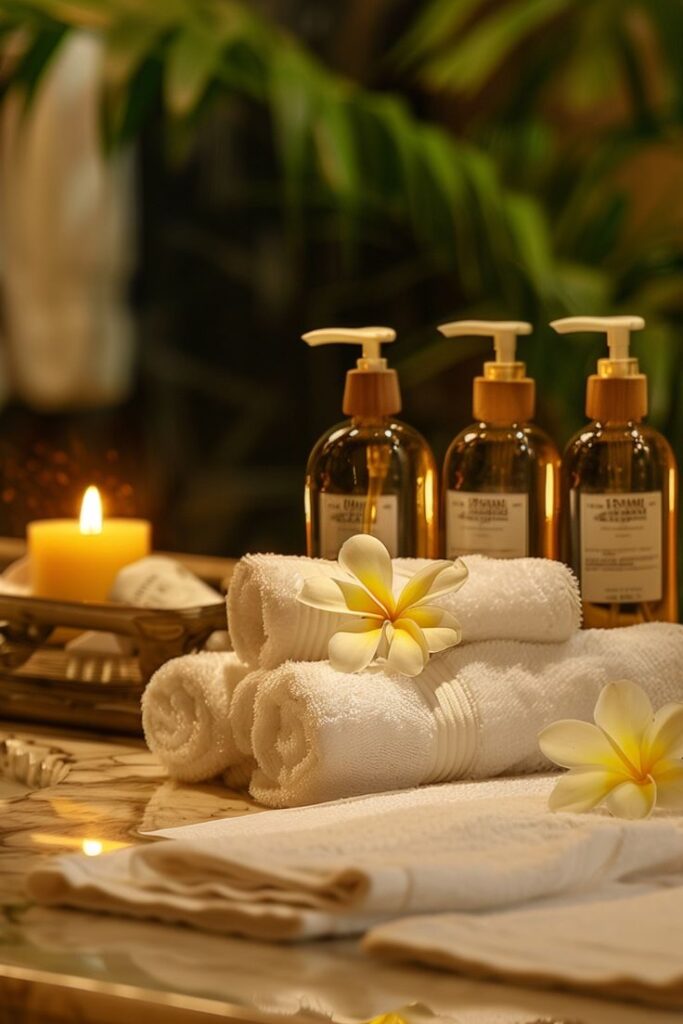
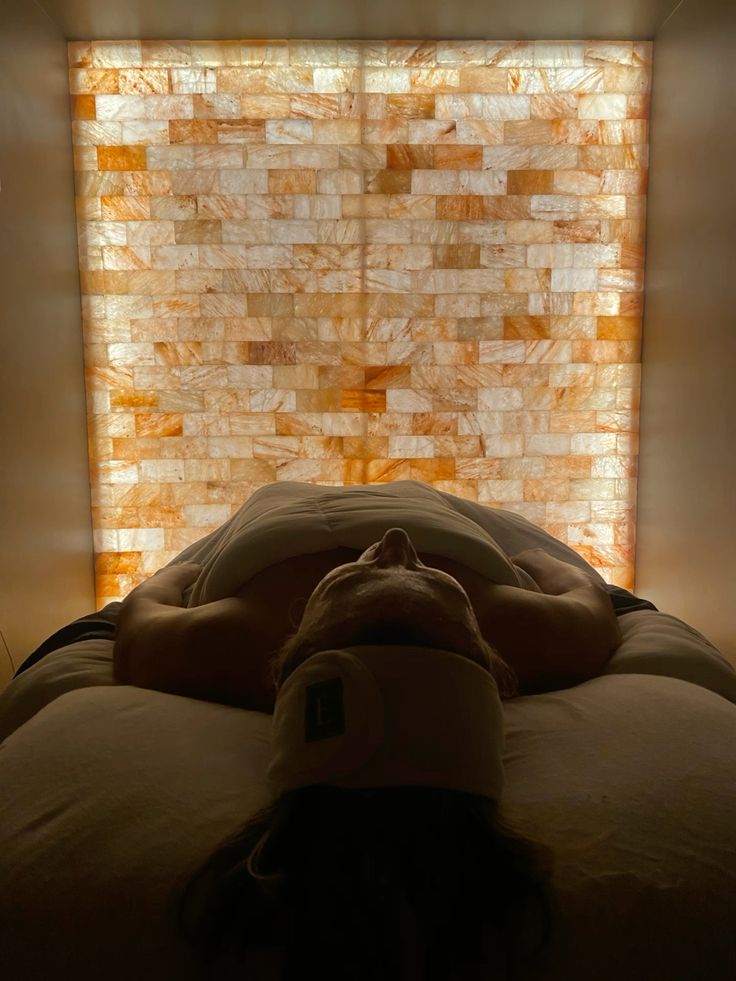
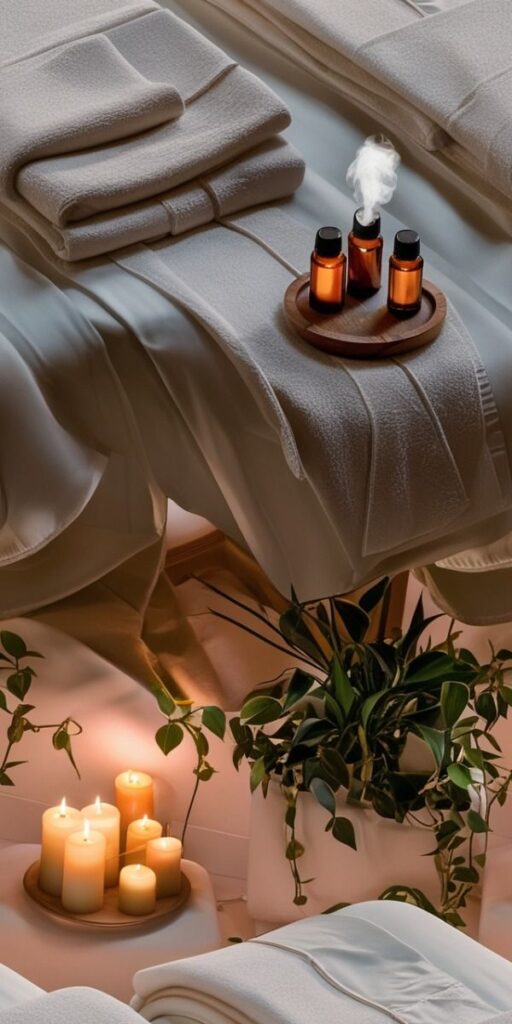
Massage and Final Touches
Incorporating facial massage techniques into your at-home spa treatment can enhance relaxation and improve your skin’s appearance. The right tools and methods will help boost circulation and promote a healthy glow.
Facial Massage Techniques
Start by using clean hands or a facial massage tool like a jade roller or gua sha stone. Use gentle, upward strokes across your face to stimulate circulation and promote lymphatic drainage. Focus on areas that hold tension, such as your jawline and temples.
- Forehead: Glide from the center of your forehead outward.
- Cheeks: Move from the nose to the ears using flat hands or a roller.
- Jawline: Perform sweeping motions from the chin to the earlobes.
Each movement should take around 5-10 minutes, allowing the skin to absorb facial oils or serums used prior. Regular massage helps maintain clear skin and can improve product effectiveness.
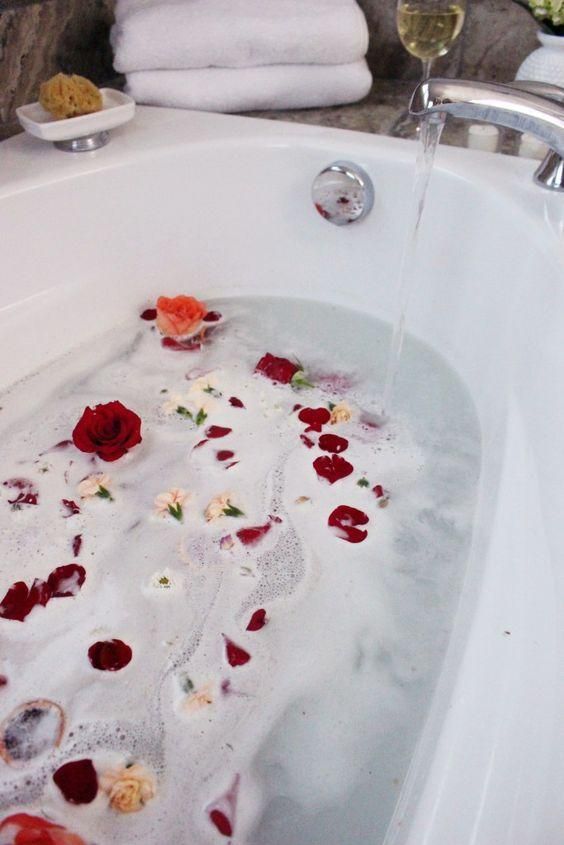
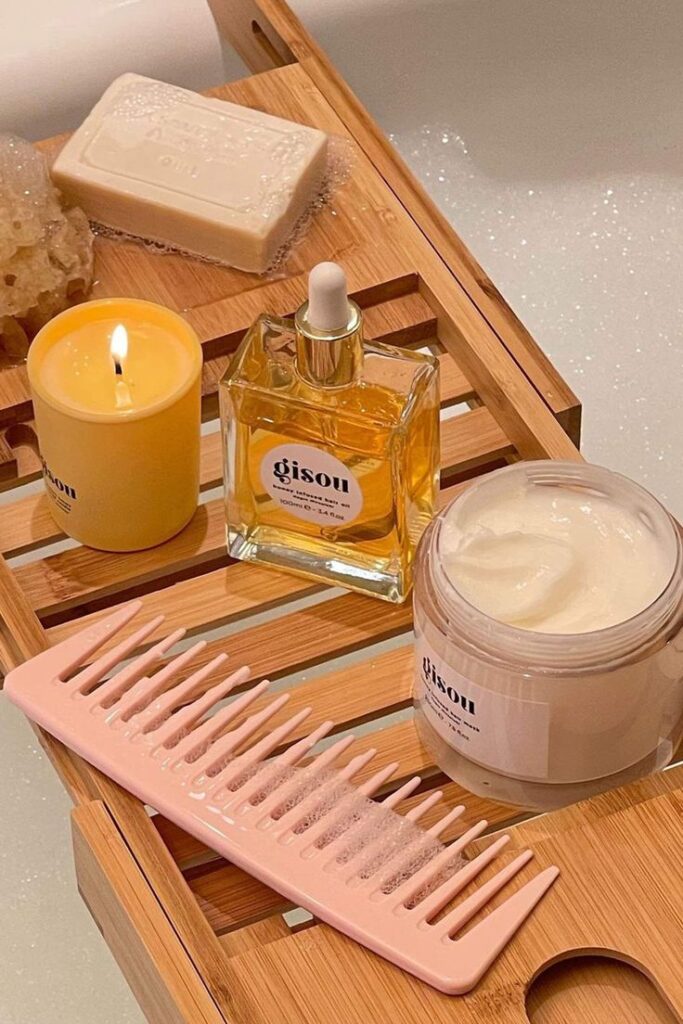
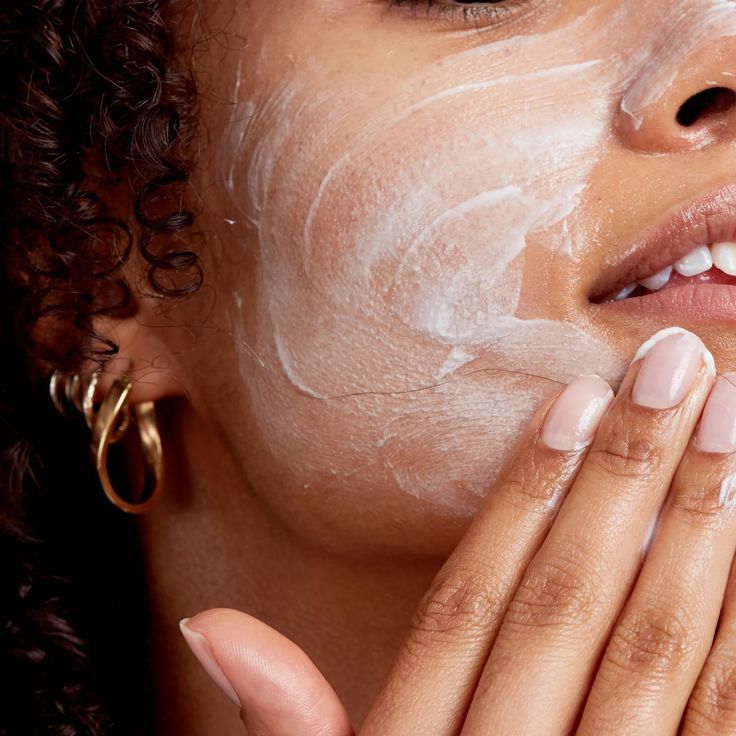
Enhancing Skin Health and Clarity
To maximize the benefits of your facial massage, integrate it into your skincare routine. Start with a clean face and apply a serum or oil to allow smooth movements. You may also incorporate techniques that boost blood flow.
- Use of Gua Sha or Jade Roller: These tools can enhance the massage experience, targeting specific areas like the cheekbones or forehead more effectively.
- Lymphatic Drainage: Focus on the lymph nodes located near the ears and under the chin. This can reduce puffiness and promote clear skin.
Finish your session with a soothing moisturizer. Making this a regular part of your regimen will help maintain healthy, radiant skin.
- 615shares
- Facebook0
- Pinterest615
- Twitter0


